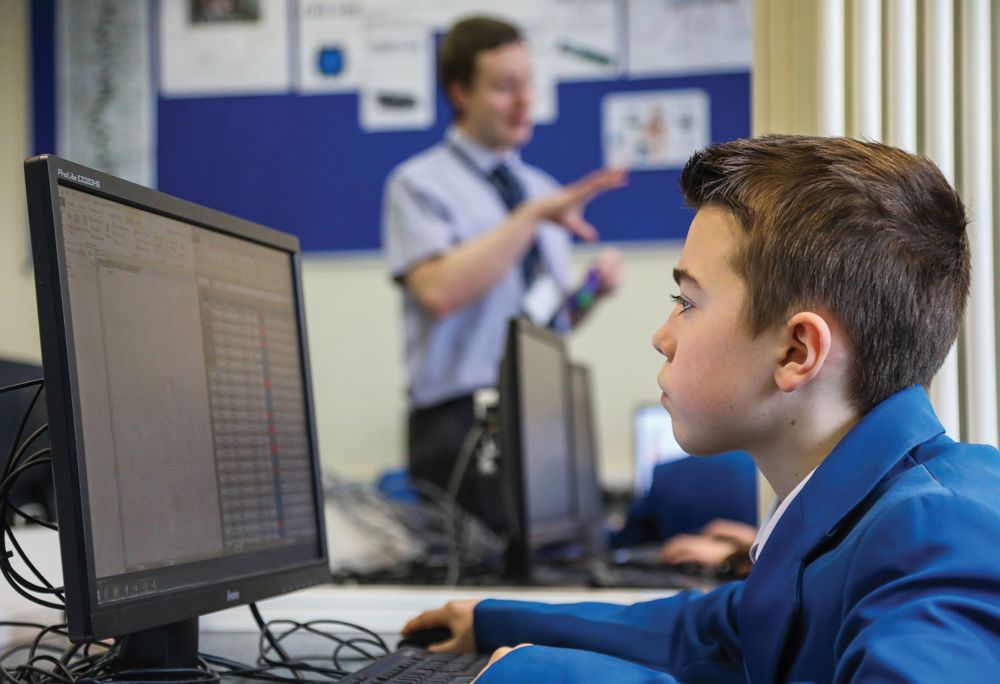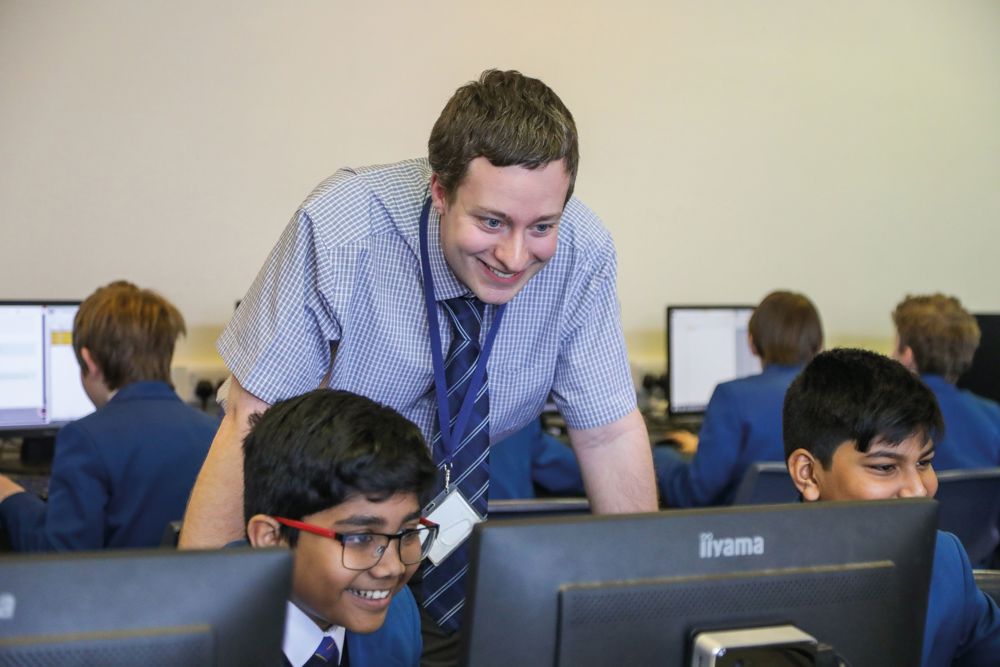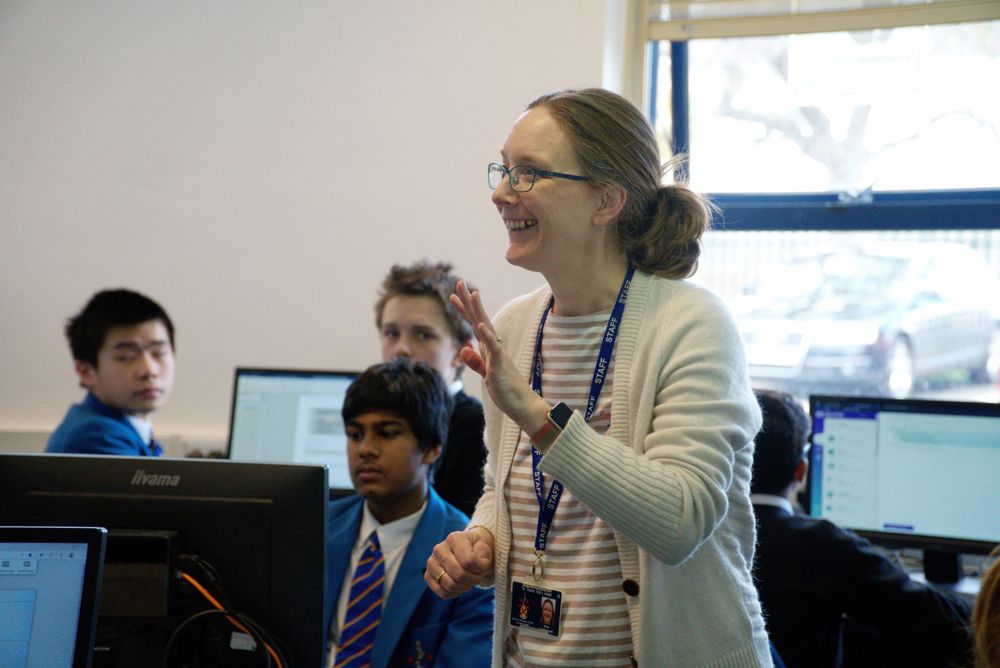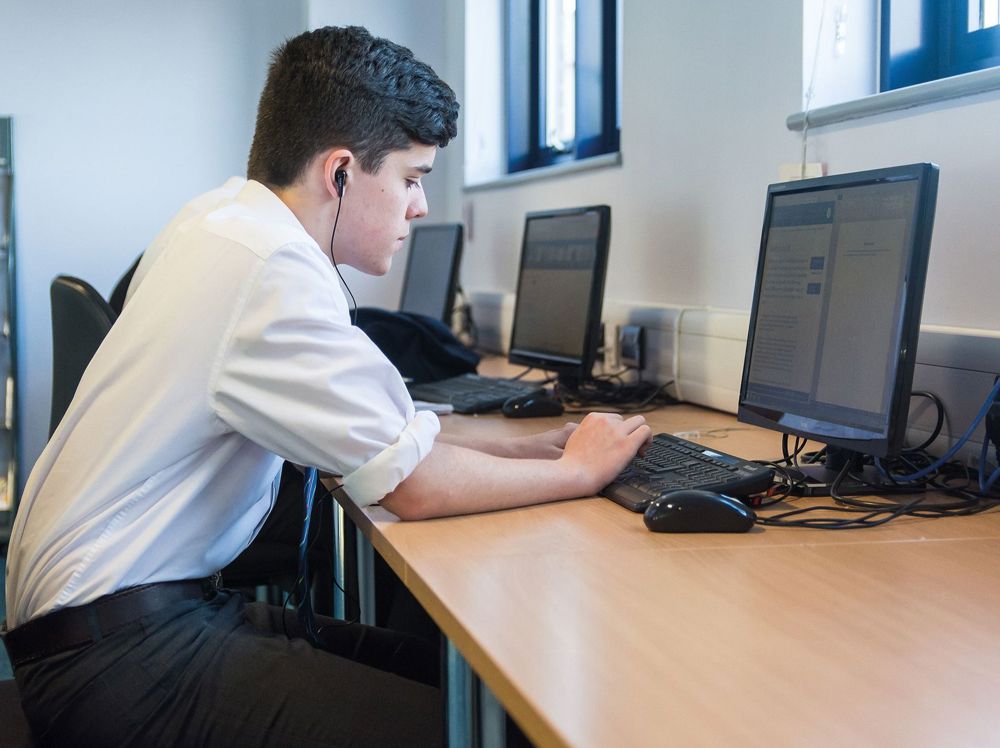
Computing
Our expert teachers guide students through an ambitious and challenging Computing curriculum, encouraging critical thinking and independent working. Pupils develop strong problem-solving skills and are encouraged to code in a variety of languages, from the visual environments of Scratch and SNAP to the text-based languages Python and C#.
Learning is sequenced, with key elements of theory from the Key Stage above included in class work and homework; Year 8 pupils are introduced to some simplified GCSE theory and extend their programming skills, strands of work which are continued into Year 9.
Curriculum Map

Key Stage 3
Students in Key Stage 3 are taught for two periods a fortnight, and follow a bespoke course. Weekly homework is set, with three spacious computer rooms available outside of lesson times for the completion of class work or homework. Year 7 students take baseline tests at the start and end of the year to assess levels of knowledge, covering theory and programming. Year 8 and 9 pupils sit a formal Computer Science theory paper during exam week.
Year 7
Induction and intro to Office. Spreadsheets and Dream PC. Coding and Scratch. Web pages and HTML. Databases. Term 6 coding, Scratch project.
Year 8
Cyber security, esafety and number systems. Coding in Small Basic. How the internet works. Representing images and sounds. Researching online, Coding project: Farmbot.
Year 9
Cyber security. Coding: Introduction to Python. Physical computing (programming a microbit). Data science. Logic circuits. Social and ethical aspects of computing.

Key Stage 4
Pupils taking Computer Science in Years 10 and 11 follow the AQA GCSE Computer Science course and are taught for five periods a fortnight. Weekly homework is set and includes theory questions, research and practical coding tasks. The course is assessed through two written examinations which each comprise 50% of the final marks.
Year 10
Programming using Visual Studio. Aspects of software development. Fundamentals of algorithms. Programming. Fundamentals of data representation. Computer systems.
Year 11
Relational databases and SQL. Fundamentals of computer networks. Fundamentals of cybersecurity.
Useful Links

Key Stage 5
Students follow the AQA A Level Computer Science syllabus and are taught for ten periods a fortnight in Year 12 and 10 in Year 13. Weekly homework tasks are set and pupils are expected to practise coding in at least two languages on a regular basis. Public examinations are sat at the end of Year 13. Paper 1, 40% of the marks, includes practical coding and questions related to a given ‘skeleton’ program. Paper 2, 40% of the marks, is a written paper with short and long answer questions. The programming project requires students to analyse a problem, design a solution, and then code and test it. The project takes place throughout the course and students are expected to complete some of this work outside of lessons.
Entry requirement
Grade 7 Computer Science GCSE (or Grade 7 Maths GCSE if Computer Science was not taken at GCSE).
Year 12 & 13
Programming. Data structures. Algorithms. Theory of computation. Data representation. Computer systems. Computer organisation and architecture. Consequences of uses of computing. Communications and networks. Databases. Big data. Functional programming. Systematic approach to problem solving. Computing practical project.
Useful Links
Enrichment
Our three large computer classrooms are available for quiet work outside of lessons to support all students who wish to continue classwork or to undertake further independent study, whether in Computer Science or other subjects. There is a popular weekly lunchtime Coding Club, which is open to students of all ages who enjoy creating their own games and building websites.
Head of Computing
Peter Johnson pwj@strs.org.uk